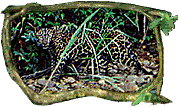Ramli Johor Malaysia Forest
There are a variety of activities that the adventurous can enjoy here. Top of the scale, at least for those eager beavers, is jungle trekking at Bukit Terasek and the canopy walk for a panoramic view of Gunung Tahan.
 asianudes
asian
GO 1
GO 2
GO 3
GO 4
GO 5
GO 6
GO 7
GO 8
GO 9
GO 10
GO 11
GO 12
GO 12
GO 13
GO 14
GO 15
GO 16
GO 17
GO 18
GO 19
GO 20
GO 21
GO 22
GO 23
GO 24
GO 25
asianudes
asian
GO 1
GO 2
GO 3
GO 4
GO 5
GO 6
GO 7
GO 8
GO 9
GO 10
GO 11
GO 12
GO 12
GO 13
GO 14
GO 15
GO 16
GO 17
GO 18
GO 19
GO 20
GO 21
GO 22
GO 23
GO 24
GO 25
Major forest types in Malaysia are lowland dipterocarp forest, hill dipterocarp forest, upper hill dipterocarp forest, oak-laurel forest, montane ericaceous forest, peat swamp forest and mangrove forest. In addition, there also smaller areas of freshwater swamp forest, heath forest, forest on limestone and forest on quartz ridges.
The forests in Malaysia are mostly dominated by trees from the Dipterocarpaceae family, hence the term ‘dipterocarp forests’. The dipterocarp forest occurs on dry land just above sea level to an altitude of about 900 metres.





Malaysia Rainforests
Jungles, Forests, Mountains, Outdoors

Malaysia is truly a treasure trove for nature-lovers. Appreciate the cool escape offered from our highland townships. Blaze a trail down past towering trees in a wet jungle teeming with life and sound. Visit the Aborigines in their settlements and witness how they have adapted perfectly to a life in the forest. This is Malaysia in all its natural beauty and splendour.

Endau-Rompin
Straddling the Johor – Pahang border, the Endau-Rompin Park is a treasure trove of virgin jungle. This is the place for the hard-core nature-lovers as the park is relatively undeveloped and most of it has not even been explored yet!
Like Taman Negara Pahang, many exotic species of fish, birds and animals roam the 870sq. km park including the rare Sumatran Rhinoceros. The trees project a serene atmosphere and as light dims on the early morning, mist rises out of the mossy boulders as fishes dart around the scenic rivers. Recently in 2006, there were claimed sightings of ‘Orang Mawas’ or Malaysia’s version of ‘Bigfoot’. Whether it is true or not remains to be discovered but research is underway to determine its presence.
The park can be accessed via a two-hour drive with 4WD vehicles from the entrance near Kahang in Johor. Visitors will reach Kampung Peta, the stating point, where they can obtain special permits to enter the park.

Gunung Kinabalu
Mount Kinabalu in Sabah is believed to be Southeast Asia’s highest mountain at 4,095 meters above sea-level. Surprisingly, Gunung Kinabalu is probably one of the easiest mountains to climb in the world, thanks to ready-made paths and permanent ropes to aid climbing steep slopes. There is even accommodation in the middle of the climb at Laban Rata (3,000 meters) before ascending to the peak.
The lower slopes of the mountain are strewn with some of the world's most diverse flora and fauna. Some of the species you can expect to see are rafflesias - the world's largest flower, pitcher plants – carnivorous vines, over 1000 species of orchids, orang-utans, gibbons, anteaters, and a multitude of birds. The climb up Kinabalu is truly an amazing experience. Best of all, there is no mountaineering equipment necessary just a bit of stamina.
The base of the mountain can be reached by road 83 km away from Sabah state’s capital Kota Kinabalu.



Gunung Mulu National Park
The Gunung Mulu National Park in Sarawak is famous for its limestone caves. Indeed, many believe the Mulu caves hold the largest cave passage in the world. Here, millions of bats swarm out each night, darkening the horizon in a black stream of flurry movement. There is vast biological diversity - over 3,500 species of plants have been recorded in the park along with animals that include deer, monkeys, giant porcupine, civets and rare hornbills.
There is also an overwhelming number of insect species to be found in the park that for example, include 458 species of ants! Other fascinating insects include leaf insects and praying mantises.
The park is accessible by a boat ride up the Tutoh River from Marudi, a short distance away from Miri.

Kuala Selangor Nature Park
Kuala Selangor offers visitors the chance to witness life in a mangrove swamp, complete with mosquitoes and scent of muddy peat. Still, the wildlife here is truly fascinating, ranging from majestic monitor lizards to silver-leaf monkeys and milky storks to sun skinks. There are towers located in and around the park to facilitate bird-watching. Watch as eagles soar in the air and dive-bomb the swamp for fish and other creatures!
At night, the river that feeds the coastal forest lights up with hundreds of ‘kelip-kelip’ or fireflies. Pollution has diminished their population when once they would light up the river like street lights but it is still a once-of-a-lifetime experience to cruise down the murky river and touch one of these lighting bugs.
Visitors can access the river to watch fireflies through Kampung Kuantan and Kampung Bukit Belimbing, both a short distance away from Kuala Selangor town. The seafood here is also pretty amazing, and you just may end remembering the food more than anything else from this trip!
The park which is open during the day time can be reached within an hour’s drive from Kuala Lumpur.

Taman Negara Pahang
Peninsular Malaysia’s most popular rainforest park is spread out over 4,343 sq. km. of virgin jungle in Pahang. Millions of life forms call this place home – Colourful birds, glittering insects, nocturnal animals, shiny fish – these are some of the creatures you’ll see when visiting this park.
Jungle walks aren’t the only activity. Anglers can pursue the powerful game fish Kelah in Taman Negara’s many crystal-clear rivers while those who love bats can explore limestone caves.
Some rare and endangered species – the Malaysian Tiger, Tapir and Pangolin are found here. Shy and elusive, spotting one will be a lifetime encounter. Also don’t forget to visit the Aborigines that live here, called ‘Orang Asli’, that carve their entire lives out of harvesting the rain forest and adapting to the natural surroundings.
Visitors can access the park through Kuala Tahan in Pahang by a boat ride up the Tembeling River, 16km away from Jerantut town.
Subscribe to:
Comments (Atom)




